Many people struggle with patellar tendonitis for months because they were told that resting and doing a few stretches is enough to heal knee tendonitis.
Following this advice can actually make tendonitis worse. On this page, you’ll learn what to do instead.
Update:
I’ve published a whole book about getting rid of tendonitis. If you want to make your legs strong and healthy again, check out the training in the book.
You can download the first chapters for free to get started today.
Jumper’s Knee Symptoms
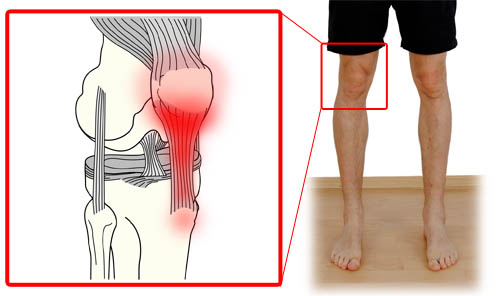
The symptoms for knee tendonitis are pain on the side of, in front of, below or even behind the kneecap.
Most commonly the pain will reside below the knee cap, where the patellar tendon attaches to the patella. You may also feel pain where the tendon connects to the shinbone.
The pain usually gets worse with activities like squatting, running, climbing stairs and jumping.
Patellar tendonitis progresses in stages and each stage requires a different healing approach. To learn more about the symptoms of the individual stages, go here: patellar tendonitis symptoms.
What Causes Knee Tendonitis?
Jumper’s knee is an overuse injury and the result of repetitive micro-trauma to patellar tendon. Usually such micro-trauma is caused by activities that include a lot of jumping, running and cutting.
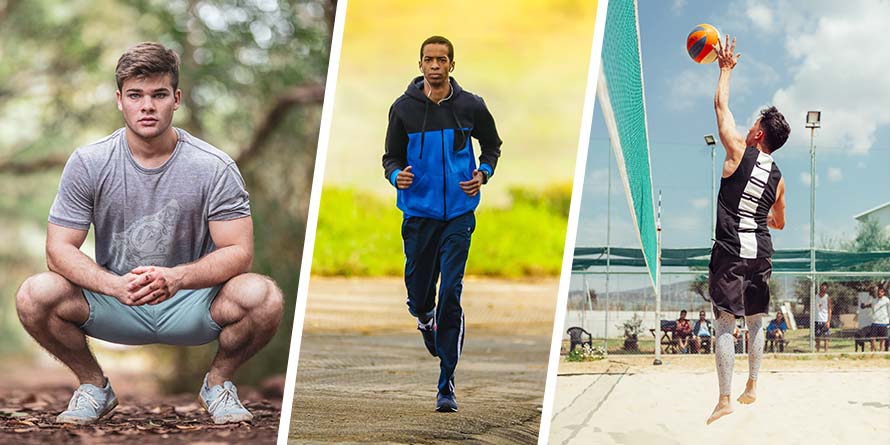
Sports such as basketball, volleyball and tennis have a high incidence rate of this injury, but it is not limited to these groups.
A common theme among people who suffer from knee tendonitis is playing through pain or regular overexertion on the court. Here’s what happens if it is left untreated:
Initially, tendonitis will just be a minor pain in the tendon below the kneecap, but with repeated overuse tissue damage cellular degradation will set in.
If the overuse continues the body will be unable to repair the damaged tissue and tendonitis turns into tendinosis: a painful chronic condition that will take months, sometimes years to heal.
Ignore tendonitis and your pain will get worse and your condition will get more chronic. Act early and you could be back to sports in a few weeks.
Can tendonitis still get better after years?
The good news is that even if you’ve trained through the pain, tendonitis can still get better under certain conditions. I’ve covered the details in this video:
Conservative Treatment of Tendonitis
There are several conservative treatment options for tendonitis.
A common recommendation is the RICE-protocol (rest, ice, compression, elevation), combined with the use of NSAIDs (Nonsteroidal anti-inflammatory drugs).
Other modalities used to deal with knee tendonitis include ultrasound treatment, deep friction massage, shockwave therapy and plasma-rich platelet injections. Speaking of injections: in his book “Framework for the Knee”, Nichalos DiNubile, MD, explicitly warns against cortisone shots, as they can “cause a rupture of the tendon” (page 20).
In physical therapy, the rehab protocols for tendonitis revolve around strengthening and stretching of the leg muscles, with a focus on stretching the quadriceps muscle group.
Keeping these traditional approaches in mind we can build on them to create an even better program for knee tendonitis. This will help us to deal with jumper’s knee more thoroughly and also seems necessary, as the traditional methods of treatment apparently only provide temporary relief.
A Better Cure for Knee Tendonitis
There are a lot of simple things you can do at home to deal with patellar tendonitis and most of them don’t even require additional tools or help by others. The following list will get you started.
Step 1: Icing Done Right
Icing is a great method to manage the pain and reduce the inflammation of acute tendonitis.
Apply the ice for a maximum of 20 minutes, directly post-exercise or several times throughout the day. You can also apply ice after performing rehab exercises, to minimize pain and inflammation.
However, icing only helps with pain management and will not contribute to the healing process if you have already progressed from tendonitis to tendinosis. So if you’ve had pain for more than a few weeks, icing will have no long-term impact.
For chronic tendonitis you can experiment with using a warm water bottle or a heating blanket for 20 minutes, several times a day. When using heating blanket you should wrap it around your knee and then wrap a big towel or a blanket around it, to keep the heat in.
When I had tendonitis heat helped my knees feel less stiff during the winter. Subjectively it also seemed to aid the healing process.
The increased temperature improves circulation. On the other hand, being outside in the cold winter weather increased knee pain noticeably. Your mileage may vary, so just experiment to find out what works best for you.
To summarize, ice is the way to deal with inflammation you feel after exercising but it doesn’t help the healing process once you’re dealing with tissue degradation instead of inflammation.
Tendonitis pain should go away after a week or two of rest, but if the knee pain persists you’re more likely dealing with tendinosis. Only you and your physician know where you stand.
Step 2: Strengthen the Tendon
According to academic research slow strengthening exercises are a great way to rehab patellar tendonitis. Slow strengthening exercises include the slow squat, slow leg presses, and isometric holds on the leg extension machine.
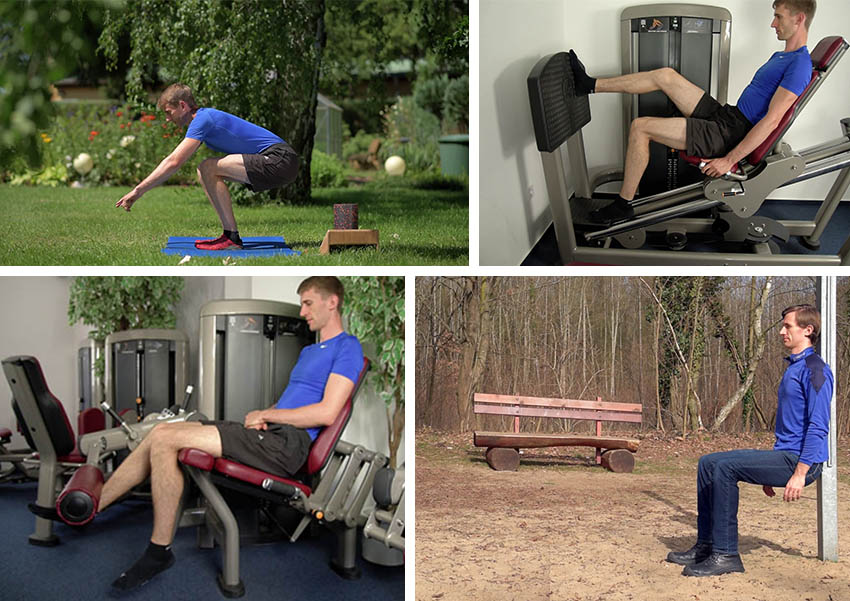
To do the slow version you simply execute the exercises slowly, taking about 6 seconds per repetition. In isometric holds you don’t move the weight at all, but just hold it in place.
These exercises may cause a little bit of discomfort, but they should never cause pain. You also need to wait until your pain has stabilized before starting tendon strengthening work.
Step 3: Look Beyond the Knees
Successful treatment starts with tendon strengthening exercises, but for long-term results you need to work on more than just the tendons. Diving into this in detail would be too much for this article, but here’s an overview:
- Tissue quality and length (especially of the quads, hamstrings, and calves)
- Postural problems (e.g., hip tilt, foot alignment)
- Mobility and stability of hip and ankle (stiff ankles or hips = problems for the knee)
- Muscular imbalances (for example, one side’s quadriceps muscle may be stronger)
- Weak gluteal muscles (matters for force absorption and knee alignment)
We talk more about the details in my email course on getting rid of patellar tendonitis:
Step 4: Return to Sports Slowly
Once your pain is gone and you’re ready to get back to sports, you have to transition back slowly. If you do too much in your first few weeks back, you may cause a setback that undoes weeks of progress.
This process is so tricky because tendon damage usually sets in before you feel pain:
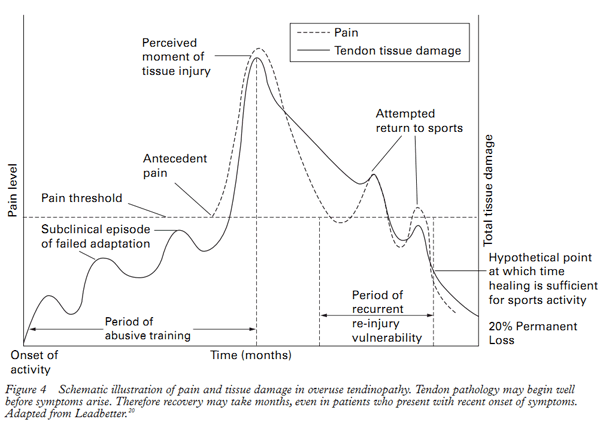
Carefully figure out how much stress your knees can safely handle during your tendon training and inch your way forward from there.
The irony is that some people train hard with the intention of progressing quickly, but they end up causing a setback, which destroys some of their training progress.
Jumper’s Knee Exercises
Here’s a basic exercise approach you can use to cure jumper’s knee.
Part 1: Releasing Excess Tension
Self-massage is a great starting point for everyone. It works even for easily irritable tendons. The muscles you want to work on are the calves, the hamstrings, the quads, and the gluteal muscles. Here’s an overview:
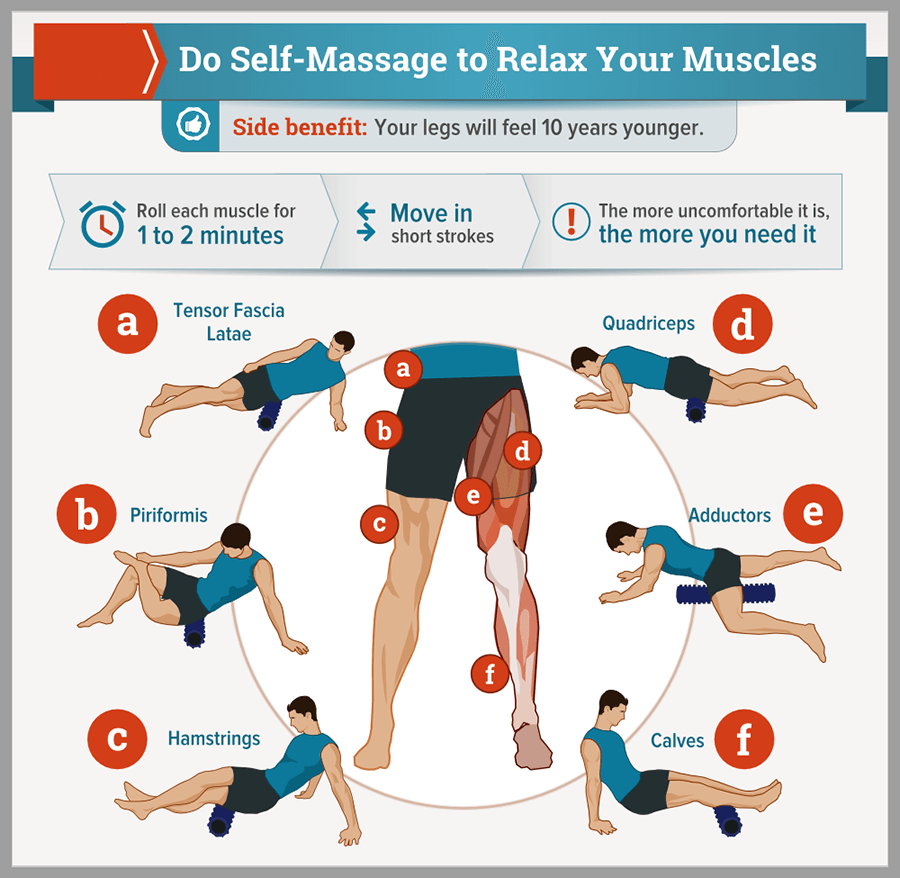
Any foam-roller works great for this.
Part 2: Restore Normal Muscle Length
Tightness in the calves, hamstrings, and quadriceps muscles can contribute to tendon overload. So we will stretch these muscles. If your tendons are easily irritated you need to be careful with the quadriceps stretch. Skip it if necessary.
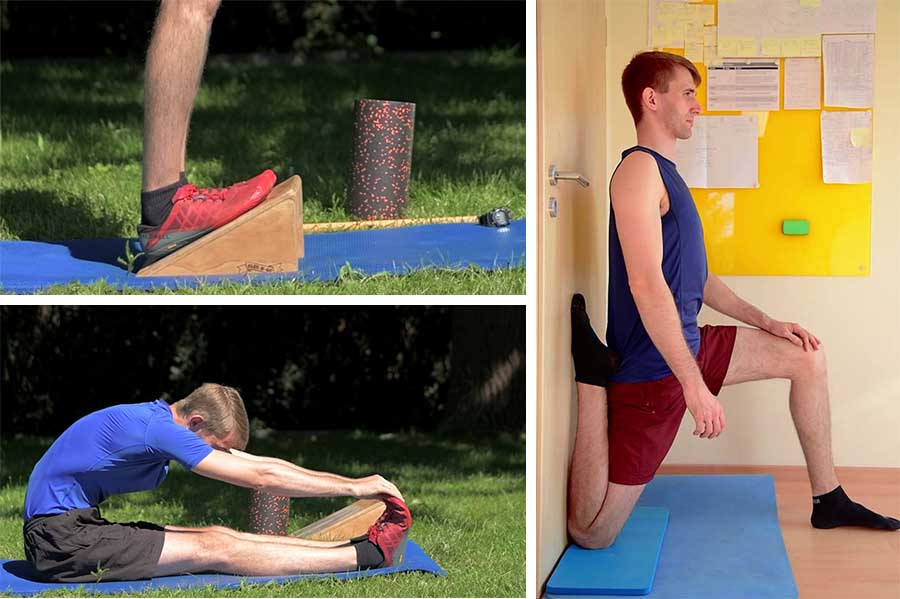
I’ve also recorded a video on how well stretching works for patellar tendonitis, based on feedback from participants of my Tough Tendons course. Here are the results:
With these first two steps we can take some stress off the tendon, but to make it strong enough for sports we need to do more.
Part 3: Strengthen Your Patellar Tendons
You can pick from a number of tendon strengthening exercises to make this happen. The classic choice is doing slow squats on a slanted board:
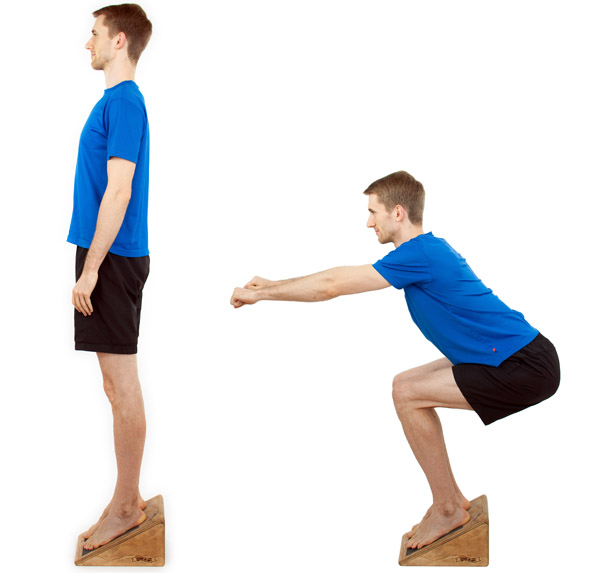
But exercises like slow leg presses, isometric holds on the leg extension machine, and Spanish Squats work as well.
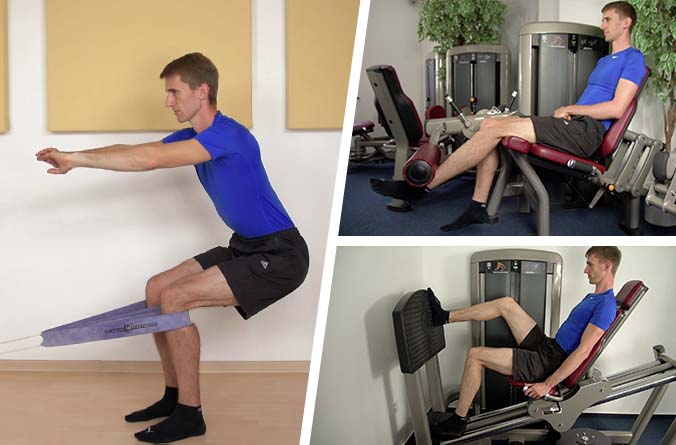
What you pick depends on your personal preference, the type of equipment you have access to, and what your knee tolerates.
Some people have a hard time with the slow squats but make great progress once they switch to leg extension holds. I’ve seen the opposite happen as well.
In my course on patellar tendonitis I start people off with isometric holds like one the leg extension machine, the Spanish Squats, or wall sits. Then I progress them to isotonic exercises like slow squats or leg presses.
Once the tendons are strong enough you can get back to running and jumping. Unfortunately most people stop the tendon training way too soon, which usually ends with pain coming back as soon as they return to sports.
Everything I Learned Since 2011
Recovering from tendonitis is difficult, especially if you start from scratch. I’ve struggled with it myself so I know how easy it is to waste months on conflicting advice only to land back on square one.
Even though I’m not a doctor I’ve dedicated a huge part of my life to helping people with patellar tendonitis get back into sports. I’ve written book about it (200+ 5-star reviews on Amazon) and recently created an in-depth online course.
And I’d love to work with you too.
If you’re ready to make some real progress, sign up below to get started today.
